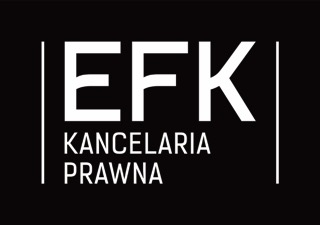The practice of business activity of our clients more and more often encourages us to analyse the possibility and purposefulness of applying new technical solutions aimed at improving their work on many areas, including the area of contracting. In the era of restrictions forced by the global situation it is necessary to limit direct contacts between trading participants. Therefore, it is particularly pertinent to redefine when their direct presence is necessary and when they can make use of electronic means. It tourns out that in many areas of current business of entrepreneurs from different branches the choice of new technological solutions will be sufficient. They will be able to reduce the necessity of direct presence and personal signing to matters of the utmost importance.
Following the development of technology, the mobile devices in particular, more and more parts of business activity have been transferred into the virtual reality. It involves documents of all kinds which are commonly drafted on a computer, sent to the client and amended in a digital form, in case of contracts. They are printed not until the final stage, when it is obligatory to obtain the signature. However would it be nowadays possible (and how much simpler would it be) to bypass also this last element and obtain a signature in a broadly understood electronic form?
The first step in that direction was taken by passing the Directive 1999/93/WE, which introduced the term of an electronic signature into the European Union legislation. According to the definition included in this act these are data in electronic form which is attached to other data in electronic form and which is used by the signatory to sign. Separately as the “advanced electronic signature” was named an electronic signature which is additionally uniquely linked to signatory, capable of identifying them, created in a way that allows them to retain control and linked to the document in a way that any subsequent change of the data is detectable.
The next stage was the enactment of Regulation No 910/2014 of the European Parliament and the Council also known as eIDAS which repealed above-mentioned Directive and constituted the qualified electronic signature; created by a qualified signature creation device and based on a qualified certificate. Therefore three types of electronic signatures have been obtained:
- simple – e.g. name and surname written under an e-mail
- advanced – e.g. signature in PKI system (Public-Key Infrastructure)
- qualified – signature using the Trusted Profile
Reflection of this state of affairs in polish law was introduction of an article 78¹ to the Civil Code, which institutes the electronic form as a distinct form requirement for a juridical act, for which a qualified electronic signature is required. Singing in the electronic form that complies with above-mentioned requirements is equivalent to making a declaration of intent in written form.
Therefore, in polish legal system following forms of a declaration of intent can be distinguished: document, written, electronic, written with an official certification of the date, written with signatures certified by a notary and a notarial deed. The principle of the freedom of form is in force, expressed in art. 60 of the Civil Code is binding here, according to which a juridical act may be expressed by any behaviour of that person which manifests his intent in a sufficient manner.
Another issue worth considering, from the perspective of market expectations, concerns a signature which is put using a tablet or other electronic device without qualified signature. A question arises, whether nowadays when we have in disposal more and more advanced technique possibilities a signature on a mobile device can be equal to that in a traditional written form or is it a different form of a declaration of intent, e.g. a document form?
This view seems to be recognised by many entrepreneurs who have already introduced in their offices a possibility to sign a contract on a tablet or who use this type of signature for a conformation of delivery.
Controversies arise mainly in the legal sciences, where one the one hand can be heard the voice of prof. Fryderyk Zoll who believes that “it is not possible to put a signature on a tablet that will comply with the requirement of authenticity, for – despite the similarity between the lines – it is not possible to preserve in this technique a natural handprint, and what follows; the line would be in this case only a certain reflection of natural handwriting, without ever becoming one” and on the other hand prof. Mariusz Załucki who claims that “also making a declaration of intent in an electronic way (e.g. on a tablet) together with a signature of a signatory seems to be sufficient to assume that the written form is kept, as long as exists a possibility to read a signature and determine its authenticity, therefore establishing and confirming an identity of a signatory”.
Concurring with the second of above-mentioned doctrine’s representatives certainly more completely meets the expectations of the market, especially considering a direction in which proceeds technology, creating possibilities of increasingly better protection of such signatures and guarantee of their authenticity. It would certainly be wrong to say that a pen and a piece of paper are required for a signature simply because this is the traditional form to which we are now most accustomed. After all, the pen was once similarly a new invention.
It is worth remembering, that not all juridical acts, e.g. contracts, require keeping written form. If a statute do not reserve appropriate special form, a document form with simple electronic signature is sufficient, to recognise a juridical act accomplished this way as valid and binding. It can considerably simplify trading, especially during times when epidemic restrictions are in force.
Marcin Jankowiak
LAWYER
